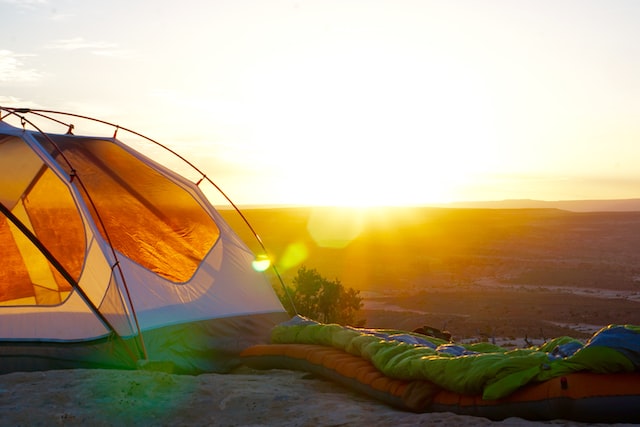Camping trips are simply fun. If you haven’t been to one already, it is wholeheartedly suggested that you must plan to go camping next summer.
Choosing the destination, getting camping equipment and adequate supplies, selecting a route to explore, and then exploring with merciless nature for a few days on your own. That’s what camping is!
If all these sound very exciting to you, fine! But before you delve into another adventure to the vast unknown, a few things must be sorted out.
Going out for the first time? Confused? Here’s an excellent collection of first trekking experiences.
Tents, hiking pants and shoes, food, and other equipment are important, but we believe a good sleeping bag is the most necessary. Not getting enough sleep can spoil your trip for the worse. Also, depending upon the local climate and your camping plan, the type of bag might vary in shape, size, and material.
But that won’t be a headache anymore. So here’s the guide to choosing the best sleeping bag for your next camping thrills.
Common tips for choosing the best sleeping bag for You
1. Sleeping Mats are Underdogs
Sleeping bags are cool. But how do you plan to keep your base warm? What separates your body from the cold ground? The mat, of course.
So if you wish to sleep, don’t make the rookie mistake of ignoring it over the bag and get a good one.
Sleeping mats work as heat impermeable pads. They are essential as the bag alone can’t provide enough insulation to the body.
Now mats can be of different types based on the material used, like :
- Self-inflating (easiest to transport)
- Non-self-inflating
- Closed cell foam ( provides the best insulation)
2. Shape and Size of Bag
Shapes matter, especially if you’re selective about your sleeping posture.
- Rectangular sleeping Bag: Largest type, thus Providing extra space and the most comfortable type but being quite heavyweight and bulky, rectangular bags can be used only in case of camping trips by car.
- Barrel sleeping bag: These are rectangular bags with the ends tapered. Less spacious and less comfortable than rectangular bags, but easier to move.
- Mummy sleeping bags: very snuggly and tight fit. It provides adequate space to sleep but might not be suitable if you change your posture a lot while sleeping. It is specially adapted for cold weather and high-altitude climbing (maximum insulation) as it is also comfortable but lightweight and easy to fold.
Mummy sleeping bags are the most common type being used nowadays. Like, we can mention the brand new Ultralight Duck Mummy Compact sleeping bags that are super lightweight with amazing all-over insulation, which keeps the body warm for temperatures as low as -14 degrees.
3. Material inside
The size, shape, warmth, weight, and price are all affected by the material inside.
- Down fill: the traditional type of sleeping bags are of a down type which uses the original feather of water surface birds like Ducks and geese.
They directly capture the heat, and having a great warmth-to-weight ratio, down bags are the easiest to carry and move.
These are expensive and not water resistant.
- Synthetic fill: People buy these bags with synthetic polymer fiber on a budget. These are comparatively cheaper but significantly heavyweight. Being water resistant, you can easily use a synthetic fill-type sleeping bag in the rain outside.
4. Sleeping Bag Liners
Liners aren’t strictly essential, but we better get some.
Liners are cotton or silk cloth that can be used inside the sleeping bag as their extra layer of comfort and insulation. Also, in moderate to warm temperatures, you don’t need a full-body sleeping bag; a decent quality liner is enough.
5. Temperature Rating
Temperature is another determining feature regardless of the shape, size, and even comfort.
There are specific sleeping bags for the specific temperatures and weather separately, and the patient needs extra to recover.
- Summer weight bags: very thin and lightweight bags. Summer weight bags can only be used on those days with forecasts of clear sunny sky and if the destination is quite warm.
- Winter bags: heavier, bulkier, and most expensive. Its thick layer can stop the air from invading the cavity—best for high-altitude hikes and snow camping adventures.
- Three sessions bag: this is literally the best of both worlds. It is the most advanced and cost-effective bag.
These bags are Optimized for a medial temperature so that they don’t heat up or cool down abruptly, which is suitable for temperate camping.
Buckle up! Winter’s coming with another fresh new season. You’ll stargaze under the night sky this time, promise yourself!
.

